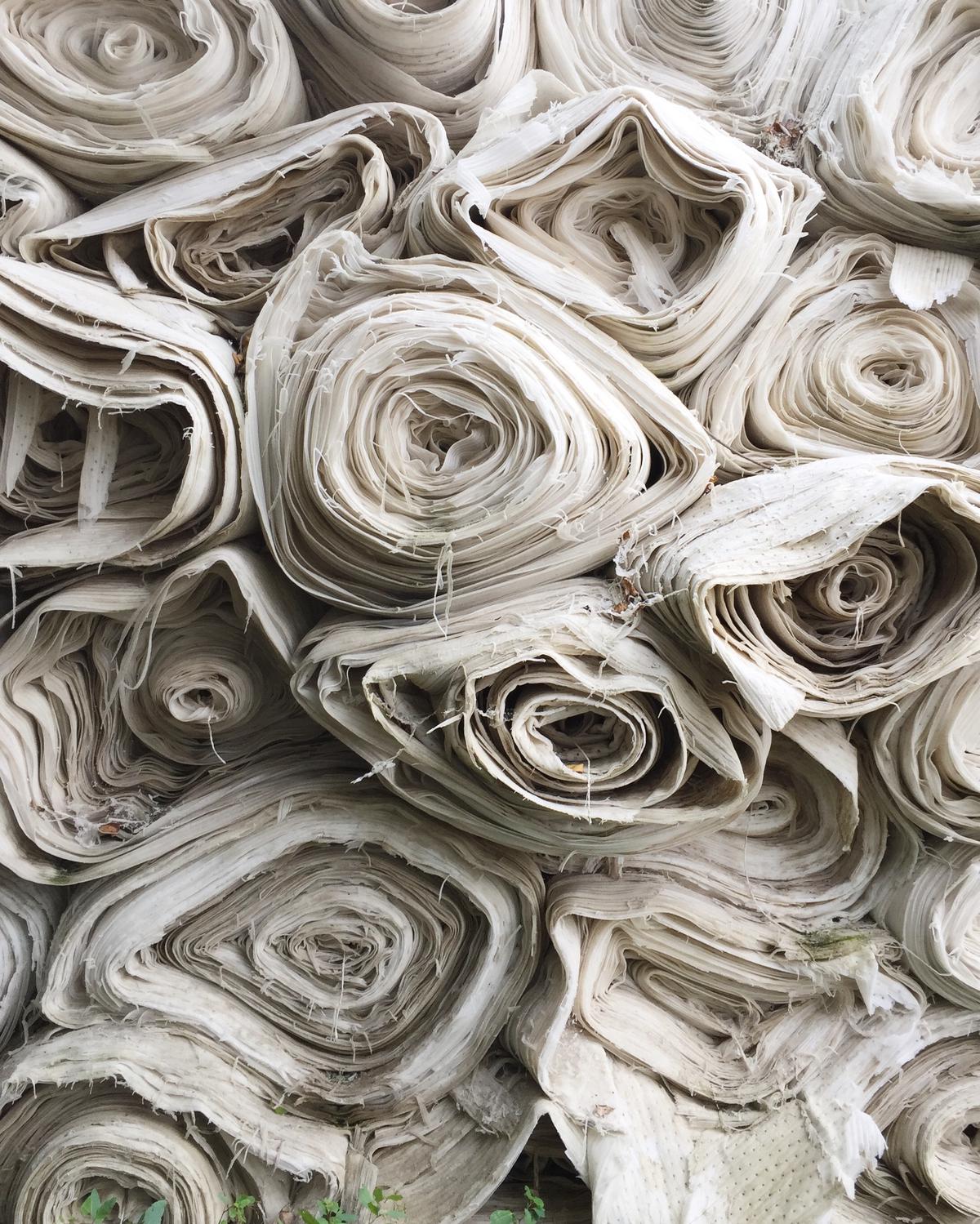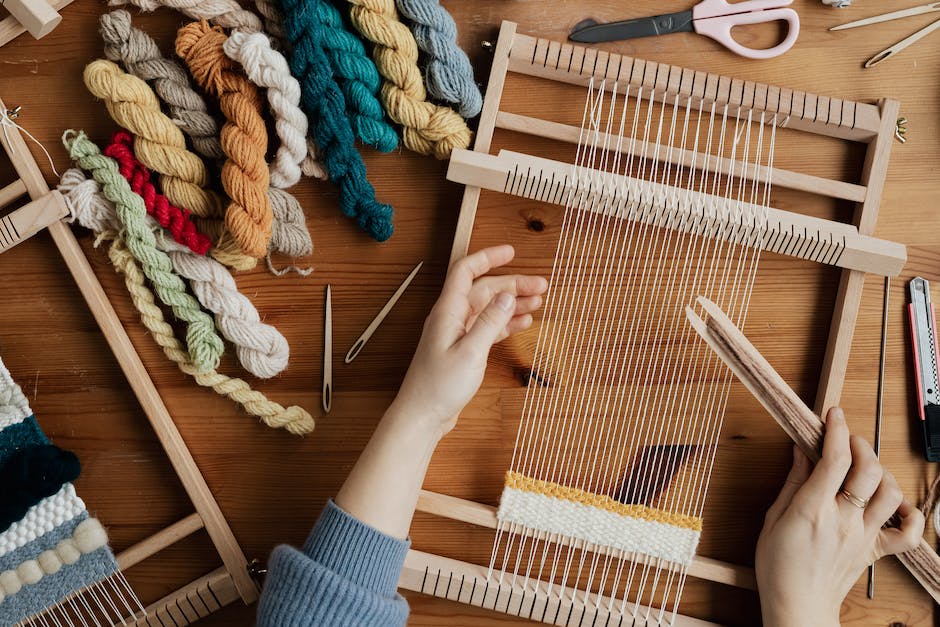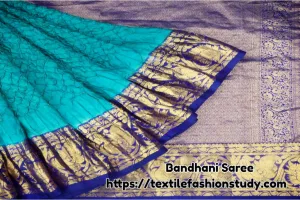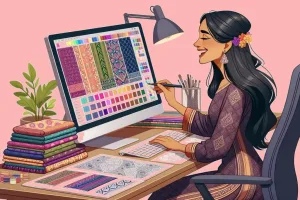Table of Contents
Textile Study
Textile study plays a vital role in our lives. However, our daily lives are profoundly impacted by the complex and diverse world of textiles, which plays a key role in a variety of sectors, such as fashion, the arts, sustainability, and historical preservation. Understanding the components, processes, and symbolic significance of textiles can increase our awareness of and appreciation for the world around us and give us a variety of perspectives through which to interpret our rich cultural and artistic past. This in-depth investigation examines the fundamental importance of textile research, its numerous advantages, and any potential problems the discipline might face. Here, I have presented in-depth discussions of effective understanding the benefits and challenges of textile study.
Benefits and Challenges of Textile Study
Studying in textile and clothing have benefits and challenges. The followings are the benefits of textile study, the challenges of textile study and the way how to to overcome challenges in textile study.
Benefits of Textile Study
Textile study has lots of benefits which is required to know. There are lots of importance of studying clothing and textile. The followings are the key benefits of textile study. They are-
General Importance of Textile Study
Textiles have a significant role in a variety of artistic works. They provide channels for expressing historical and cultural traditions. Numerous extraordinary advantages can be accessed by exploring the intricacies and difficulties that come with learning textiles. Not only does this field spark innovation, but it also deepens our understanding of cultural diversity and moves us closer to the sustainability of the textile industry. There is no denying the importance of textile studies in the modern world.
Due to its adaptability and broad variety of uses, textile research is extremely important in many different industries. The foundation of fashion design and tailoring in the industry is textile analysis. An in-depth knowledge of textiles enables designers and producers to develop cutting-edge, aesthetically pleasing, and useful designs that are essential to the development of fashion trends.
The study of textiles has an impact on the quality, robustness, and overall design of upholstery. Fabric knowledge is crucial for upholstery producers and interior designers since it can have a big impact on the durability and comfort of furniture.
Driving Trends and Innovation in Textiles
The textiles study is a crucial innovation catalyst. The development of new applications and techniques that will change the textile industry can be facilitated by a thorough research of diverse materials and their properties. Future design trends in the fashion, home décor, and other industries can be predicted and influenced with the aid of textile research.
Studying Textiles and Comprehending Cultural Heritage
A vital role for textiles in expressing and maintaining cultural heritage. Textiles represent the diverse patchwork of cultures around the world, from traditional weaving methods to local dyeing customs. Individuals can better appreciate the cultural richness and legacy reflected in these textiles by having an understanding of them.
Study on Sustainability Issues in Textiles
The textile sector contributes significantly to chemical pollution, water waste, and huge carbon emissions, all of which are global environmental problems. As a result, there is an increasing emphasis on integrating sustainability principles into textile studies. This entails knowing how various fabrics affect the environment, using sustainable production methods, and advocating the use of eco-friendly raw materials.
Gaining knowledge of textile methods and materials
A thorough understanding of the various materials and methods applied in the textile business is also provided by studying textiles. Students are given the knowledge necessary to develop and meaningfully contribute to the textile business in addition to being able to make better judgments when buying textiles thanks to this understanding. They might use their skills to produce original and creative textile designs, or they might contribute to the development of more environmentally friendly materials or methods.
Research in textiles and historical preservation
The study of textiles provides a window into and a means of preserving past customs. Around the world, textiles have a huge impact on history and society, and in some cases, specific methods or designs date back hundreds of years. People are able to help keep these traditions alive by learning about textiles. The ability to appreciate and accept other cultures can grow as a result of this awareness.

Photo by ethanbodnar on Unsplash
Developing practical skills through study of textiles
Practical skills that are useful in both personal and professional situations can be learned through studies in textiles. Every skill, from more artisanal practices like weaving and dyeing to more technical ones like pattern-making, sparks creativity, sharpens attention to detail, and develops problem-solving abilities. Additionally, developing these talents can be financially advantageous through the possibility of starting a textile business or through the alteration of one’s own clothing.
Career Possibilities from the Textile Study
The practical knowledge and abilities acquired through studying textiles can lead to a variety of job choices. This covers work in the textile industry, teaching, historical preservation, fashion and interior design, and more. Additionally, textile designers are useful in areas like the fashion, home goods, and automobile industries where fabric and design are crucial.
Challenges of Textile Study
There are benefits and drawbacks to studying textiles, as well as benefits. One of the key challenges is the complexity of the textile sector, which calls for a deep understanding of a wide range of fabrics and their properties. This may be excessive for people who are just entering this field.
It is difficult to navigate the sustainability aspect of textiles because there aren’t any standardized markers for sustainable fabrics. Identification and mitigation of the environmental impacts of various textiles require substantial study and frequently expensive resources.
Not to mention, the vast amount of cross-cultural interaction induced by globalization has boosted textile diversity while removing cultural distinctions from it. In order to completely understand and apply their studies in textiles, students face a unique challenge.
However, studying textiles also presents certain challenges. One of the largest is the cost associated with acquiring materials for practice and projects. Many high-quality fabrics and textile tools can be expensive, putting a financial strain on students. Additionally, the physical nature of creating textiles can be demanding. This can involve long hours of standing or sitting in one position, leading to physical discomfort or strain.
Competition in the Textile Industry
Another obstacle for people wishing to pursue a career in textiles is the industry’s intense competition. Given the quantity of competent workers in the profession, breaking into the industry can be particularly challenging. Additionally, maintaining relevance and innovation is essential and necessitates ongoing learning, just like in any other industry depending on creativity and design trends.
Sustainable Practices in the Textile Industry
The textile sector and its large environmental imprint are receiving more attention. This is a special challenge for students of textiles, who must work to balance their creative abilities with sustainability principles. This necessitates a thorough awareness of waste minimization, resource conservation, and the prioritizing of eco-friendly materials whenever practical.

Recognizing the Complexities of Textile Study
Exploring the study of textiles opens to a world of bright materials, cutting-edge designs, complex manufacturing processes, and rich cultural nuances. However, as with every academic field, studying textiles has its own set of difficulties.
The thorough knowledge of textiles’ history and cultural setting is a major barrier. A crucial component of textile study is immersing oneself in the diverse textile traditions of historical and present cultures and civilizations. The implications of textiles on society, the economy, and culture are included in this field of study, which goes beyond the physical characteristics of materials and techniques. Each textile item symbolizes an artifact of human expression, making the significance of its cultural interpretation clear.
The necessary practical abilities present an additional challenge. Strong theoretical groundwork and practical experience are necessary for subject mastery. Hands-on experience is necessary to comprehend the distinctive characteristics of different textile materials, become familiar with various weaving and coloring procedures, or even become accustomed to cutting-edge textile machinery. The study of textiles is further complicated by the fact that many times these abilities can only be developed over a long period of time by consistent practice.
Environmental and ethical issues pertaining to the manufacture of textiles are also discussed in textile studies. The textile industry is frequently criticized for having negative environmental effects such resource depletion, water contamination, and trash production. It’s critical for textile researchers to approach these problems head-on, learning about the environmental effects of various production techniques and materials, and working toward more sustainable practices in the textile industry.
Similar moral conundrums result from production chain abuse, underpaying textile workers, and unstable working conditions. Particularly, the fast-fashion industry has come under fire for its production methods. As a result, students of textiles must consider these problems and seek to find ethical and ecological solutions.
Textile study is a rigorous discipline, yet despite the aforementioned challenges, it is nonetheless a very rewarding one. It gives significant understandings of human ingenuity, cultural norms, and social structures. The complexity of textiles develops a wider understanding of various fields, making it valuable in shaping a sustainable and fair future for the textile sector.

Overcoming Challenges in Textile Studies
Learning Challenges: Expanding Access to Textile Studies Education
Studying textiles can lead to a variety of rewarding employment opportunities in the fashion and design industries. But there are still barriers to getting a good education and specialized training, especially in places with poor educational opportunities and resources. Scholarship programs, online learning settings, and cross-cultural study programs could all be implemented as solutions to these constraints. Thus, aspirant academics from various socioeconomic or geographic backgrounds can investigate the subject and arm themselves with the necessary knowledge and abilities to succeed in their quest of textile expertise.
Promoting Sustainable and Ethical Production: Managing Textiles’ Greening
A significant portion of waste creation, greenhouse gas emissions, and water pollution are caused by the textile sector. Promoting sustainable and ethical production in textile studies is therefore crucial. Due to the frequently complex and evolving nature of sustainability standards and best practices, incorporating these issues into the curriculum can be challenging. To address this, a comprehensive strategy is needed, one that promotes research and innovation in sustainable technology, intensive training on sustainable design principles, and collaborations with groups that support ethical fashion.
Broadening the scope of textile studies by promoting interdisciplinary and culturally sensitive approaches
Textile studies touch with fields like history, sociology, and cultural studies in addition to fabric and fashion. Students’ understanding of textiles in socio-cultural contexts can be improved by including these interdisciplinary elements into textile studies. Nevertheless, given the wide diversity of subject areas, doing so can be difficult. Additionally, it can be challenging to retain cultural awareness while researching various textile techniques from around the world. Collaboration with specialists from many fields, the inclusion of field trips and study abroad opportunities, and the inclusion of ethics and cultural sensitivity training in the curriculum are all possible solutions to these problems.
Technology integration in education: the cutting edge of technological advancement
With technological breakthroughs, the textile and apparel industries are constantly expanding. New technologies like 3D printing, laser cutting, and smart textiles are now used in conjunction with or to replace conventional methods of textile production. Although difficult, incorporating new technologies into curricula for textile studies is necessary to give students skills that are applicable and practical. To meet this challenge, institutions must spend money on cutting-edge technology and give teachers ongoing training so they can stay up with the quick-paced changes.
Benefits of Overcoming These Obstacles: The textile studies are worthwhile
In textile studies, tackling these problems can have a big impact. Increasing access to education promotes social mobility and creates a diverse, creative workforce. Students’ preparation for the workforce and capacity to make contributions in an area that is fast expanding are improved by incorporating technology. Students are better prepared to be change agents in the face of environmental difficulties when sustainability and ethical production are promoted. Finally, developing an interdisciplinary and culturally sensitive approach creates a broader understanding of international textile traditions, enriching the educational experience and fostering a more informed, courteous global community.
In sum, it goes beyond simply comprehending various materials and processes to study textiles. Our grasp of society, the past, aesthetics, and sustainability can all be deepened by taking this journey. Although there are many difficulties in this field, such as the need for practical training, the complexity of cultural understanding, and environmental issues, these can be overcome by increasing accessibility to education, integrating technology, putting a focus on sustainability, and appreciating a culturally sensitive approach. The development and support of textile studies are unquestionably essential for our constantly changing environment given its multifaceted advantages and worth across numerous industries.







1 comment
zara
Textile study has its advantages and challenges. Benefits include diverse career opportunities, creativity, sustainability, cultural appreciation, and problem-solving skills. Challenges involve technical complexity, industry competitiveness, environmental concerns, globalization, and economic factors. A passion for textiles and continuous learning can help individuals succeed in this field.